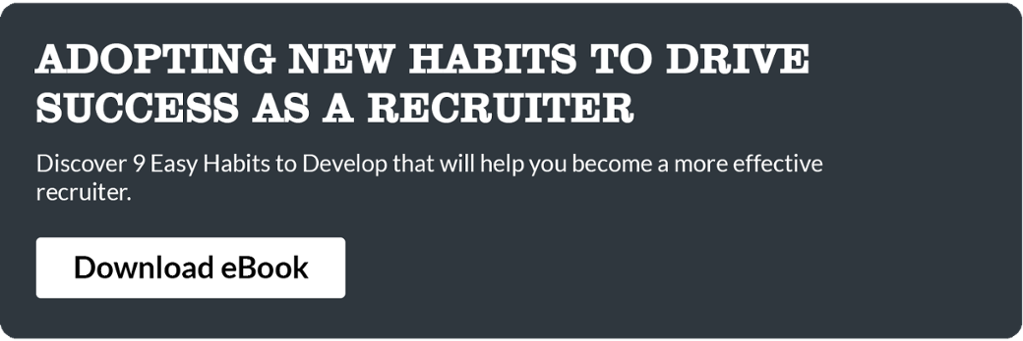Taking on a new job with a client is something that recruiters do on a weekly basis, so why do we continue to make the same age-old mistakes when we do it? Avoiding these common errors when taking on a new job can help ensure a far higher conversion rate every time.
 Problems that arise when taking on a new job with a client are often due to:
Problems that arise when taking on a new job with a client are often due to:
- Recruiters being dealt unrealistic expectations from the hiring manger
- Both parties having different opinions on the recruitment strategy and how long the hiring process should or will take
- Hiring Managers being dissatisfied with the quality of candidates they’re provided with.
So what are these common mistakes when taking on a new job with a client, and how do we avoid them?
1. Relying solely on the brief
Sometimes you’ll take on a job feeling confident that you have such a good understanding of the role from the client’s brief, that this is all you need to do the job. But relying solely on a brief is the first error you can make when taking on a new job in recruitment!
The job brief you’ve been sent hasn’t been created with a view to attract external candidates into the role (it’s often used as an internal job description) so there will be assumptions and gaps that you’re expected to fill. So make sure you dig deep, ask questions and gather as much information as possible at the very beginning. Pick up the phone or meet face-to-face so you can engage in a conversation around what the ideal candidate looks like for the role.
Digging deeper will not only ensure you have the clearest possible understanding of the role before moving forward, but you’ll also be encouraging the hiring manager to have the highest confidence in your ability to do the job well.
2. Not asking the right questions
Now don’t get me wrong, it’s not about badgering your client with as many questions as they’ll tolerate, but about asking the right questions in the first place.
You’ll want to be asking the kinds of questions that suggest you care about the bigger picture and demonstrate you have a good understanding of what it takes to fill a role. For example, clarify the need and establish why the position is available: Is the role open due to company growth, or has it been newly created? How long has the role been open, and what have their recruitment efforts been so far? It also doesn’t hurt to clarify the business value here and query what impact this open role is having on the business.
This process of information gathering is a prime time to establish if the hiring manager understands exactly what’s involved in the process, especially if you’re working on a difficult role to fill.
3. Making promises you can’t deliver on
One of the most common mistakes you can make when taking on a new job is not managing your client’s expectations early on. What are their expectations on the time-to-hire and, most importantly, are they realistic? Don’t be afraid to push back if you know they aren’t – remember you’ll only do damage in the long-run if you aren’t able to deliver.
As a recruiter, you know exactly what the candidate market is like, so share your knowledge and the stats you hold in order to manage expectations. It’s true that sometimes clients won’t be fully aware of the external factors involved, but it’s up to you to inform them.
Only once you’ve collected all the above information will you be armed with the right tools to formalise a job profile that will accurately describe the core objectives of the role, the key challenges and deliverables expected. You’ve come a long way from that initial job brief!
Moving forward
Once you’re at the point that you can say you’ve safely avoided all three of these common errors in taking on the role, you’ll be in a position where you can begin to address the bigger questions that will ultimately lead to a great hire. You can begin detailing out what the candidate will be looking for in the big picture, where the role fits into the hiring organisation and what this role can actually offer potential candidates in terms of their future. It’s here that you the recruiter can add real value in order to position and attract the right sort of candidates.
So rather than jumping into a new job only to waste time running in circles looking for an unachievable list of skills, this document can work as the blueprint between you and the hiring manager so you can both agree on what the ideal (but realistic) candidate looks like.
Joanne Causer
Joanne is a Senior Growth Specialist at Firefish. She loves bringing on board new recruiters who are looking to recruit smarter.




